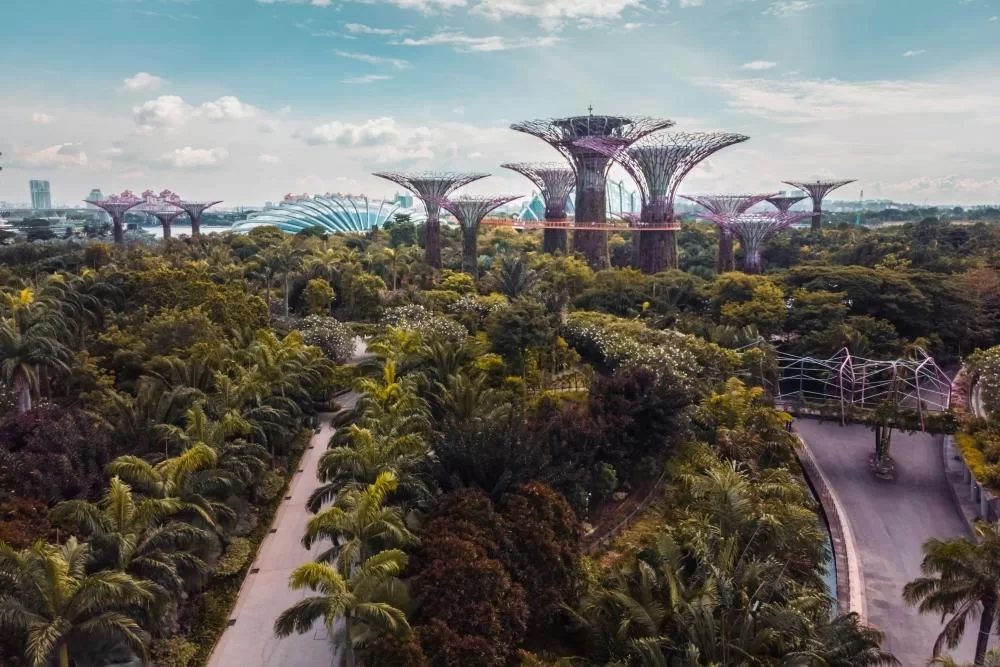Facade cleaning is more than just maintaining the visual appeal of buildings – it’s essential for preserving their structural integrity and longevity. In Singapore’s urban environment, where first impressions matter, the state of a building’s exterior can influence public perception and property value.
With increasing awareness of environmental impacts, there is a growing shift towards eco-friendly cleaning practices that support aesthetic goals while championing ecological responsibility. This blog post explores how building owners can integrate these sustainable practices.
The Challenge of Facade Cleaning
In Singapore’s tropical climate, buildings are continuously exposed to harsh environmental elements such as humidity, pollution, and frequent rain. These factors may necessitate regular facade cleaning to prevent long-term damage from substances like smog, bird droppings, and dust.
However, traditional cleaning methods often involve high water consumption from pressure washing and harsh chemicals, which can be detrimental to the environment. Such challenges call for innovative approaches that can help minimise environmental footprint without compromising cleanliness and building maintenance standards.
Eco-friendly Cleaning Solutions
To counter the environmental challenges posed by traditional facade cleaning, building owners may adopt some of the following practices:
- Water-Efficient Technologies: These systems dramatically reduce the consumption of water – a precious resource in Singapore. By using advanced nozzles and controlled dispersal methods, these water-efficient technologies ensure efficient cleaning without waste, aligning with the country’s sustainability goals.
- Biodegradable Cleaning Agents: Unlike commercial cleaning agents that can harm the environment, biodegradable agents break down naturally in the environment. Effective at removing urban grime, these agents ensure that the cleaning process leaves no toxic residues, safeguarding the local ecosystem and public health.
- Advanced Technological Integration:
- Automated Cleaning Systems: These systems bring precision to cleaning, targeting dirt and stains without the collateral damage of excessive water use or chemical exposure. Automation helps maintain the integrity of delicate surfaces on high-rises and historical buildings.
These advancements in sustainable facade cleaning can address immediate cleaning needs and reflect a commitment to long-term environmental goals.

Benefits Beyond Aesthetics
While the primary aim of facade cleaning is to maintain the exterior cleanliness of buildings, adopting eco-friendly methods offers a host of benefits that positively impact both the community and the environment:
- Conservation of Natural Resources: Eco-friendly cleaning techniques can help reduce the use of water and chemicals. This conserves valuable resources and minimises the ecological footprint of cleaning operations, supporting broader environmental conservation efforts.
- Enhanced Property Value: Buildings maintained with eco-friendly methods are increasingly favoured in the real estate market. This appeal is driven by a growing consumer preference for sustainability, which can lead to higher property values and attract tenants and investors who prioritise environmental responsibility.
- Improved Public Health: By reducing the release of harmful chemicals into the air, sustainable facade cleaning contributes to better air quality. This is especially crucial in urban areas where air pollution can pose significant health risks to residents. Cleaner building exteriors also help reduce the prevalence of allergens and respiratory irritants.
- Positive Community Impact:
-
- Biodiversity: Biodegradable cleaning agents are less likely to disrupt local wildlife and plant life, fostering a healthier urban biodiversity.
- Public Perception: Clean and green practices improve the community’s perception of urban management, boosting pride and satisfaction among residents.
- Long-Term Sustainability: These practices set a precedent for future urban maintenance, encouraging other businesses and services to adopt green methods. This cumulative effect can lead to a substantial reduction in the overall environmental impact of urban areas.
Incorporating sustainable methods in facade cleaning thus not only preserves the aesthetic integrity of buildings and office spaces but also contributes significantly to environmental sustainability, enhanced economic value, and improved public health outcomes.
Embrace Eco-friendly Cleaning Practices for a Cleaner, Greener Singapore
As we advance in our urban development, integrating sustainability into facade cleaning in Singapore is a beneficial strategy and a necessary evolution for responsibly maintaining our built environment. By adopting eco-friendly cleaning solutions, we are preserving the aesthetic beauty of our cityscape and contributing to a healthier, more sustainable urban future.
As an office cleaning company in Singapore, BNL is dedicated to leading this change, urging building owners and service providers to adopt innovative and eco-friendly cleaning solutions.
With these innovations, we can ensure that the structures that define our skyline remain monuments of architectural achievement and beacons of environmental responsibility. Let us all commit to this change, fostering a city that not only looks clean but truly embodies sustainability principles.




